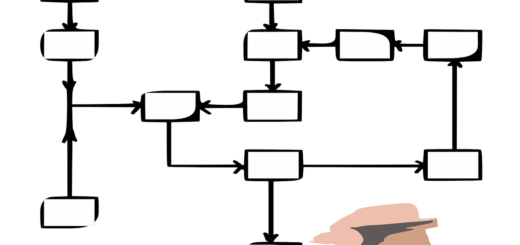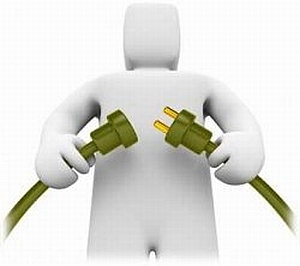To Be Greatest | Smart Productivity Tips for Project Managers

These days, the number of responsibilities of project managers is constantly growing, but the number of subordinates, as well as the time to complete projects, is shrinking. Given the stringent requirements, meeting deadlines is no easy task. The facts speak for themselves: last year, less than a third of all projects started were completed on time, successfully, and on budget.
Whether you are the manager of a traction project aimed at building residential complexes, or you have an agile Baccarat online casino games development project on your plate, you must develop the productivity skills to successfully complete the project. It’s simple to say, but it’s hard to be productive when you have to simultaneously perform the duties of the founder, manager, team member, strategist, and leader.
The good news is that every project manager can learn how to be productive. We’ve put together 6 tips on how to get more done without being torn apart. The main thing is to organize your work properly.
So, let’s begin:
1. First, “Eat the Frog”
Becky Blanton, the author of The October Abduction of Thomas Martin, suggests “eat the toad first,” that is, do the hardest thing first. According to her observations, after that everything else is done in a heartbeat. It’s like a chain of reactions, where, by the domino principle, each event affects the next.
Here’s how it works:
- From the night before, write down what “toads” are coming your way.
- The next day, do all the items on that list. Only when you have done this, Move on to the next things to do.
2. Delegate Correctly
Delegating incorrectly is worse than not delegating at all. Whenever you realize that a delegated task has gone wrong, you probably stop delegating altogether.
In fact, it only makes sense to delegate if you do it right. In most cases, managers don’t get the results they want because they make one of these mistakes:
- Delegating belatedly. Leads to a piling up of unassigned tasks among employees. You and your colleagues will have to postpone new tasks because of those that have been put aside for a long time, and no longer tolerate delays.
- Mistakes in prioritization. Tasks that cannot wait should be called urgent, and the cases that affect the long-term prospects of the firm – important. If important rather than urgent tasks are handled first, the work may turn into a complete shambles.
- Delegating to the wrong person. You can’t delegate tasks to employees who can’t handle them. Being able to see and assess the abilities of your colleagues directly affects how quickly your team can handle the tasks in front of them.
3. Meetings Should Not Drag On
Meetings take up an enormous amount of time. Unfortunately, it is unlikely to avoid them completely, but you can try to spend as little time on them as possible so they do not affect your productivity.
There is a rule according to which the number of meetings in one day should be limited to one, and it should not take more than an hour. Complicated? It really isn’t.
There are three ways to make meetings short and meaningful:
- Think about alternatives. Perhaps you can have the meeting online. This would allow you to not have to leave your desk.
- Outline the main issues you want to discuss. Skip the part where you’ll need to explain the context. You can focus only on the solutions to the issues in the meeting.
- Put the clock in a conspicuous place. A conspicuous clock in the conference room will keep meeting participants focused and concise.
4. A Plan for Getting Out of Potential Conflicts
Conflicts are an integral part of a project manager’s job. Nevertheless, it can be difficult to resolve conflicting situations. The best way to avoid conflicts is to prevent them if at all possible. Even if conflict does arise, it is possible to smooth over the edges.
If you notice that tension has appeared in your firm, it is important to pay attention to this situation. The time and effort spent on this will pay off in the long term: some conflicts will simply not arise.
To do this, it is worth thinking about how and where employees could express their dissatisfaction. But there is no point in creating a place where people will only complain. Let your colleagues have an incentive to find the causes of the problem and look for ways to solve it.
5. Track Your Progress Daily
A project manager’s productivity is directly related to the productivity of the team he or she works with. If the team is not doing well, its manager is unlikely to succeed.
You can wait until the project is over before voicing the long list of problems that have appeared, or you can make comments daily, as the project progresses.
Look for tools for managers to give feedback quickly. In the event the project isn’t going the way you’d like it to, create an action plan. Tell and show exactly what can be improved and how. Show examples, not lectures.
6. Create a Step-by-Step Plan
Every time you miss a deadline, you strike a blow to your own productivity. Chasing missed deadlines won’t allow you to focus on productivity.
This is where a milestone plan comes in handy. It should break down the entire project into separate phases or stages that have their own deadlines.
Intermediate deadlines help you stay on schedule. Even if you miss one of them, you still won’t miss the moment when it’s time to hit the high points.
A step-by-step plan can be created in three simple steps:
- Step 1 – Determine intermediate goals that will help you accomplish the task
- Step 2 – Set them in order (urgent, important, and those that can wait)
- Step 3 – Assign them to employees and assign a deadline
Wrap It Up
It would seem that this point is neither five nor ten here. The best way to get things started is to make a list. Come to think of it, you can even present the entire post as a list – the difference is obvious.
But before you embark on your list-making journey, remember the three recommendations you need to implement. To fire up the productive engine to its fullest potential, all three parts must move in unison.











